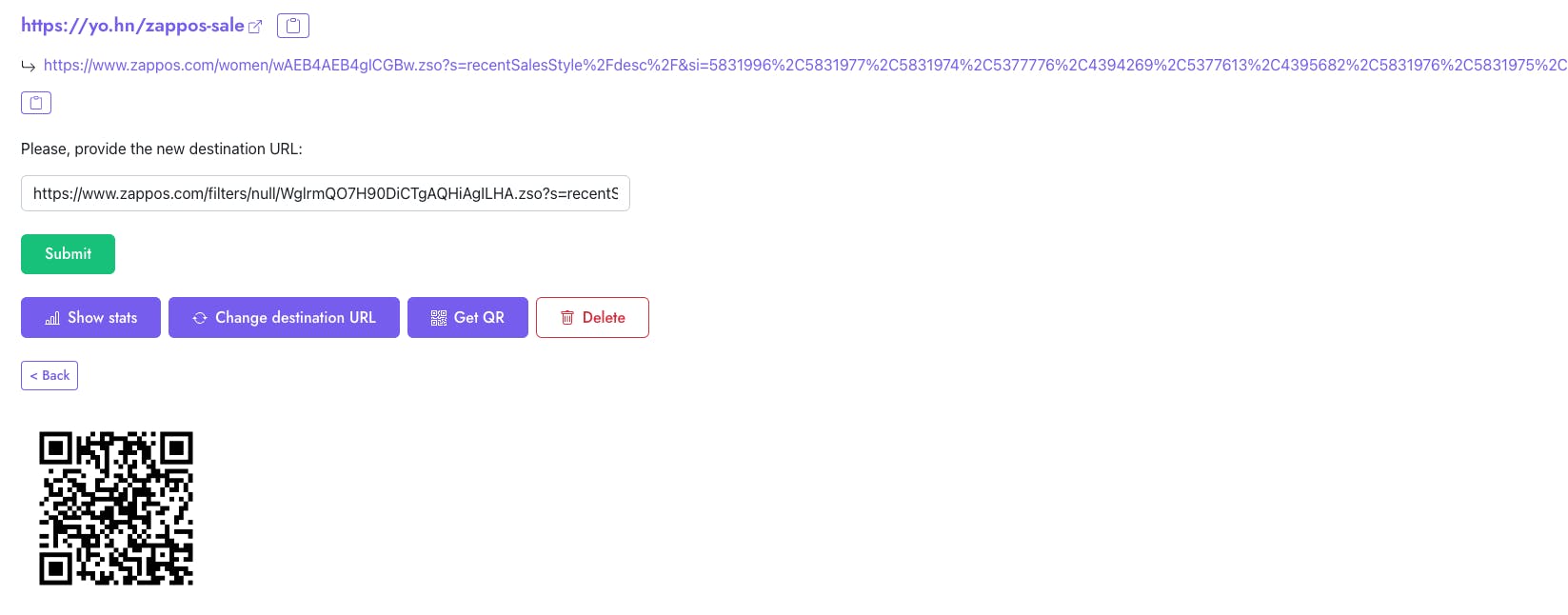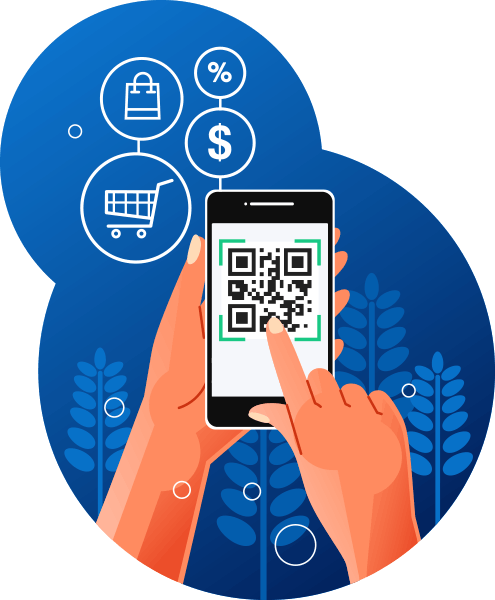Static vs. Dynamic QR Codes: Unraveling the Differences
There are many QR code classifications out there but today we want to focus on the following dichotomy: Static vs. Dynamic QR codes. While both serve to provide a streamlined digital experience, there are critical differences between them, pertaining to flexibility, tracking abilities, data storage, and use-cases. This article will dissect the variations and help you understand which type may be better suited to your needs.

Static QR Codes
As discussed in the previous article, static QR codes are fixed and immutable. The information they carry is directly encoded into the QR code itself. This could be a URL, a text, a vCard, an email, or a phone number. Once a static QR code has been generated, its content cannot be edited or changed. If you need to update the information, a completely new QR code needs to be generated.
Static QR codes are excellent for scenarios where the information is unlikely to change over time, such as personal contact details on a business card, Wi-Fi passwords, or embedding text information.
Advantages of Static QR Codes
- Simple to generate and use.
- Can be used offline as the data is directly encoded.
- Free to create using many online QR code generators.
Disadvantages of Static QR Codes
- Inflexible - if the encoded information changes, a new QR code must be generated.
- Lack of tracking and analytics.
Static QR codes, also known as traditional or standard QR codes, are a type of QR code that, once created, the data it contains cannot be changed or modified. They directly encode the data (like a website URL, email, phone number, or plain text) into the QR code itself. The data embedded in these codes is permanent, meaning if you need to update the information, you have to create a new QR code.
Uses of Static QR Codes
Static QR codes are incredibly versatile, with a multitude of uses across different sectors. Here are a few examples:
- Business Cards: Instead of carrying a physical business card, you can create a static QR code that contains your contact information. When scanned, the information is stored directly in the user's phone.
- Marketing and Advertising: QR codes can be placed on brochures, billboards, and posters to direct potential customers to a company's website, a product page, or other relevant information.
- Events and Tickets: Static QR codes are often used on event tickets. When scanned, they can provide the ticket holder with pertinent information about the event, such as location, time, and seating details.
- Product Information: Companies often use static QR codes on their product packaging to provide customers with additional information about the product, such as user manuals, how-to videos, or nutritional facts.
Pros and Cons of Static QR Codes
Pros
- Simplicity: Static QR codes are easy to create and use. You can easily generate one online, even for free, by providing the necessary data you want to encode.
- Versatility: You can encode a variety of data into static QR codes, from simple text to URLs, making them quite versatile.
- Offline Use: Because the information is stored directly in the QR code, they can be used even without an internet connection.
Cons
- Inflexibility: The most significant drawback of static QR codes is their immutability. If you need to change the embedded information, you have to create a new QR code.
- Limited Tracking: Unlike dynamic QR codes, static ones do not offer analytical capabilities. Businesses can't track who scanned the code, when, or from which location, which limits its usefulness for marketing campaigns.
Creating Static QR Codes with Yohn.io
Creating a static QR code with the help of Yohn.io is a very straightforward process. Our free QR code generator will be perfectly sufficient for creating a QR code that doesn’t need to be changed during its life cycle.

Step 1: , scroll to the bottom and select the corresponding tool depending on the type of information you want to turn into a QR. Currently we support converting URLs, plain text, virtual business cards, emails, SMS, WiFi access details, crypto wallet addresses, Twitter and Facebook links into QR codes. More tools are coming soon, so stay tuned!
Step 2: Next, type in or paste the information you want to convert and click “Get QR code”. You will then be prompted to enter your email address - this makes storing your QR codes safer and easier, as they will simply be kept in your email where you can easily fetch them any time you need.
Step 3: Check your email - your QR code is waiting for you there.
Dynamic QR Codes
On the other hand, dynamic QR codes are flexible and mutable. Instead of directly encoding the data into the QR code, they contain a redirect to a URL. This means that the destination URL can be changed even after the QR code has been printed or distributed, ensuring the QR code remains valid and current.
Dynamic QR codes are typically used in marketing or advertising campaigns where flexibility and tracking are paramount. For instance, they can redirect users to a website, an app download, a survey, or a promotional offer, and these destinations can be changed over time without changing the QR code itself.
Advantages of Dynamic QR Codes
- Flexibility - the encoded information can be edited or changed after the QR code has been generated.
- Analytics - They provide data about the number of scans, time of scans, location of scans, and device used. This makes them extremely valuable for businesses seeking to measure the effectiveness of their marketing campaigns.
Disadvantages of Dynamic QR Codes
- Often require a paid subscription to generate and maintain.
- Need an active internet connection to redirect the user to the URL.
Creating Dynamic QR Codes with Yohn.io
Dynamic QR codes are only supported in the paid version of our service. Here’s how to create them:
Step 1: Create an updateable short link inside Yohn.io’s dashboard.
Step 2: Click “Get QR”.
Step 3: Whenever you need to redirect the users to a new landing page, go to “All links” inside Yohn.io’s dashboard, find the URL you want to update, click “Edit” -> “Change destination URL”, update the URL and click “Submit”. Voila, your users are now being redirected to a new URL without you having to update your QR code.
IMPORTANT: Do not alter the custom short URL slug during destination URL updates as it will require the QR code to be regenerated.

Dynamic QR Code Use Cases
Dynamic QR codes are often used in situations where the destination URL may need to be updated or changed frequently or where data tracking is beneficial. Here are some use cases:
- Marketing Campaigns: Dynamic QR codes are particularly useful for marketing campaigns. They can be used on physical promotional materials such as posters, flyers, and billboards. The ability to change the URL behind the QR code allows marketers to keep their campaigns up to date without having to physically replace the QR codes. This means they can change the landing page of the QR code to promote new products, offers, or updates as needed.
- Analytics: Dynamic QR codes enable tracking of scans, which can be extremely valuable for businesses. This can provide information on how many people are interacting with the QR code, where they are scanning it from, and when. This data can be used to optimize marketing strategies and understand customer behavior.
- Event Tickets: Dynamic QR codes can be used for event tickets or passes. If event details change, the QR code can be updated to reflect the new information without issuing a new ticket.
- Restaurant Menus: Restaurants can use dynamic QR codes for their menus. If the menu changes, the restaurant can update the URL linked to the QR code instead of printing new menus.
- Product Information Updates: If a company wants to provide up-to-date information about a product, they can use a dynamic QR code. If product details, instructions, or other related information need to be updated, the URL can be changed without having to change the QR code on the product packaging.
- Retargeting Campaigns: Dynamic QR codes can be used in retargeting campaigns. After a user scans the code, they can be retargeted with ads on various platforms like Google and Facebook.
- Customer Surveys or Feedback: Businesses can use dynamic QR codes to collect customer feedback. If the survey needs to be updated or changed, the URL can be easily modified without changing the QR code itself.
Remember that these are general examples, and the specific applications of dynamic QR codes can vary widely depending on the needs and creativity of the user.

The Main Differences
While both static and dynamic QR codes serve to encode information efficiently, the primary differences lie in their flexibility, use-cases, and tracking capabilities:
- Flexibility: Static QR codes are immutable, and the information cannot be changed once it's encoded. Dynamic QR codes, however, allow you to change the information or destination URL even after the QR code has been distributed.
- Tracking: Static QR codes do not provide any tracking or analytic capabilities. In contrast, dynamic QR codes provide valuable data like scan locations, times, and frequency, helping businesses understand their audience and measure campaign effectiveness.
- Use cases: While static QR codes are best for situations where the information is unlikely to change, dynamic QR codes are ideal for variable data or marketing campaigns that need to adapt and evolve.
- Internet Dependence: Static QR codes don't need an internet connection to provide the encoded data. However, dynamic QR codes require internet connectivity as they redirect users to a URL.
- Privacy & Security: Another critical aspect to consider when choosing between static and dynamic QR codes is privacy and security. Since dynamic QR codes redirect to a URL, they can potentially be manipulated to direct users to malicious websites, leading to security issues. Therefore, when using dynamic QR codes, it's crucial to use a trusted QR code generator and ensure the URL you're directing to is secure. On the other hand, static QR codes pose less of a security risk since they encode the data directly. Users can be confident that scanning the QR code won't lead them to an unintended or harmful website. However, it's always essential for users to have a reliable QR code scanner that verifies the content before opening it.
- QR Code Management and Manageability: When it comes to managing QR codes, dynamic QR codes take the lead due to their ability to be updated without reprinting the QR code. This is particularly advantageous for businesses that print QR codes in bulk for promotional materials or product packaging. If the target URL needs to be updated, dynamic QR codes can be easily managed and updated through a QR code generator's dashboard, saving time and resources. On the flip side, managing static QR codes can be more challenging. Since any changes to the data necessitate generating a new code, businesses must replace all existing codes in circulation. This can result in significant reprinting costs and logistical difficulties.
In essence, both static and dynamic QR codes offer unique benefits, and the choice largely depends on your individual requirements. If you need a simple, easy-to-use code for static information, a static QR code is a perfect choice. However, if your needs involve flexibility, tracking, and analytics, a dynamic QR code would be a more suitable option.